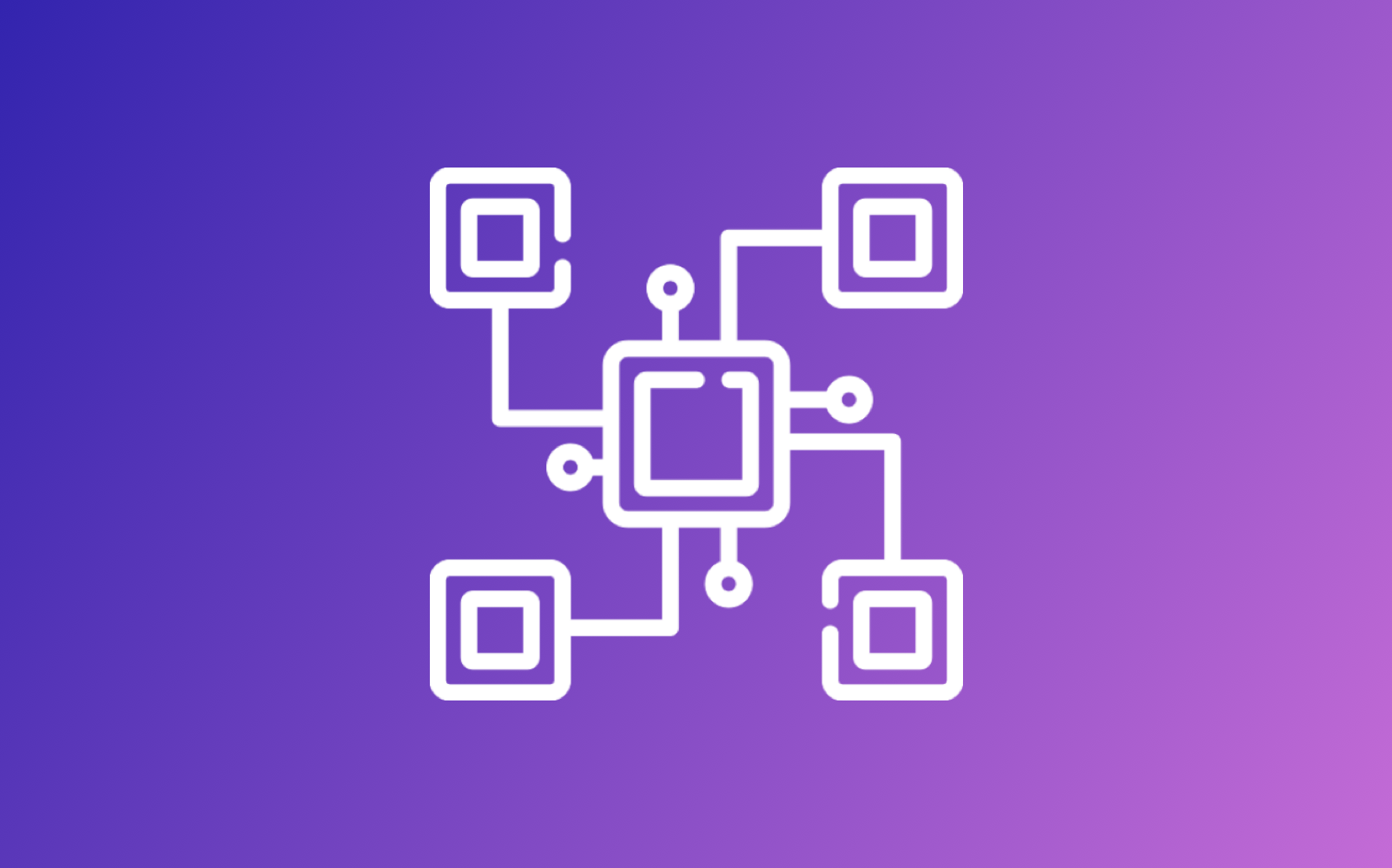
 back to all posts
back to all posts
The Complete Guide To Different Types Of Cloud Computing

Chances are, if you’re reading this, it’s because you sell or market some kind of product or service that relies on cloud computing.
You likely develop quite a lot of content designed to attract customers in need of services like yours and go to great lengths to make contact with decision-makers who will ultimately help your company close the deal. These decision-makers are probably Chief Technical Officers, Vice Presidents of Engineering and logistics leaders who have granular knowledge – and questions that require specialized knowledge.
Because you’re dealing with savvy technical experts who want to feel confident as they work with your brand, it’s extremely important to know how to speak their language. After all, a major part of establishing trust is communication. If you can’t communicate with your prospect effectively, then you’re in trouble.
Now, you may not necessarily be a deep-in-the-trenches technologist. Fortunately, you don’t have to be. Simply understanding some of the most important terminologies in cloud computing will take you a long way toward better, more effective conversations with your clientele, bosses and colleagues. From there, you can build relationships that will turn leads into sales, and words into results.
The basics: What is cloud computing?
Have you ever accessed data or used an app that you could access from any place with an internet connection? If so, then you’ve definitely encountered cloud computing technology. Once unthinkable to most consumers, cloud computing has become a staple of everyday life.
Cloud computing, often referred to as simply “the cloud,” is the delivery of on-demand computing resources, everything from applications to data centers, over the internet on a pay-for-use basis.
The cloud is essentially a set of distributed systems – servers, applications and databases, to name a few – that are hosted by a major provider such as Amazon, Microsoft or Google.
The benefits of cloud computing include reduced costs and faster delivery of content/applications.
In the enterprise environment, the possibilities for cloud computing are similarly endless. From website development and hosting to customer relationship management to human resources, project management and accounting, the cloud offers a variety of simple-to-access software solutions to address the litany of challenges and opportunities businesses face today.
Life Before Cloud Computing
Before cloud computing, using a variety of apps and storing data presented a challenge to businesspeople and consumers alike.
Data exchange often required tedious (and frequently slow) downloads and uploads from directories stored on local hard drives and data racks. Expensive storage solutions were often required to keep track of anything digital, and one could not take it for granted that data or software could be accessed remotely – meaning, you wouldn’t be able to access certain software or other information using a mobile device, which is an ability many of us now rely on.
That meant hemorrhaging more time behind a desk – printing, emailing, uploading, etc.
The Cloud and Its Many Uses
As mentioned previously, the cloud makes applications, data, software, platforms and storage remotely available to users. This is important because it opens up a world of possibilities to businesspeople and consumers of all kinds without burdening them with challenges like local storage, self-development of digital infrastructure or web hosting.
More specifically, common uses of the cloud include
Building Websites and Blogs
In the past, to own and maintain a website, you needed your own server to act as storage and host the digital infrastructure of your site. You also needed a webmaster to run it unless you were a technical expert yourself.
Now, it’s easy for you to sign up to sites like Squarespace, Wix, and even Webflow to not only claim a domain and build a custom website (they provide much of the underlying digital infrastructure for you), but also rely on those services for stable and consistent hosting.
Hosting Applications
If you want your application to be remotely accessible, you’re probably going to want it to be remotely hosted in some way. The cloud makes that possible, giving your application a home in the digital world where it can be accessed, modified (with the appropriate permissions) and scaled across a variety of environments and device types.
Cloud computing services make this possible by hosting and managing virtual environments where applications can be developed, published, edited and remotely accessed. In the B2B sales and marketing world, this means prospects and customers can access your content and platforms from anywhere.
Storing Data, Recovering It, and Backing It Up
Previously, data storage, backup and recovery were some of the most tedious and costly challenges businesses and consumers trafficking in digital information faced. Cloud computing changed all that when it began to offer a variety of online storage options, mitigating the need for on-site servers, hard drives, flash devices and other digital storage units.
While it’s still probably a good idea to store your data locally just in case, well-known services like Dropbox and iCloud offer both enterprise and consumer solutions for file storage and backup, meaning you won’t have to worry about your data going MIA thanks to scaled, reinforced storage methods that ensure its preservation.
Analyzing Data
In cloud computing, data analytics refers to the practice of using remotely hosted digital infrastructure to collect and process data on the web. It’s used across a variety of business and consumer environments and is often seen in shiny “AI-driven” platforms.
Marketers, for example, use data analytics across social media to conduct large-scale social listening, to measure content performance and to help guide decision-making about their future outreach.
Similarly, sales and marketing leaders might use cloud data analytics services like Intricately’s own solutions to gather insights about their total addressable market (TAM) and craft account-based marketing initiatives.
The Biggest Players in Cloud Computing
There are a variety of cloud service providers, but a couple of them are so massive and so salient to the broader infrastructure of the modern web that they stand above the rest.
Amazon Web Services:
AWS offers a broad array of on-demand global computing, storage, database, analytics, application and deployment services. These services allow subscribers to obtain large-scale computing capacity without the need for a personally owned server farm, meaning they can host their applications, store their data and execute a variety of digital functions in a famously large and secure environment.
Of the major players in the cloud computing space, AWS is known to be the largest – owning a dominant 34% of the market share.
Google Cloud Platform:
This suite of public cloud computing services, offered under the umbrella of Alphabet Inc., plays host to a range of digital functions and services for computing, storage and application development, all of which are run on Google Hardware.
In addition to its base-level services, GCP offers a variety of higher-level, cutting-edge services, including artificial intelligence big data operations. It’s the second-largest cloud computing services provider, following closely behind Amazon Web Services.
Microsoft Azure:
Owned by Microsoft, Azure is a cloud computing service that helps subscribers build and host solutions using Microsoft’s suite of products and data centers. The company’s suite of cloud products allow users to create scalable applications without their own digital infrastructure and conveniently deploy those applications across enterprises.
There are some growing key players in the cloud wars, including Alibaba Cloud and IBM’s recent bet on cloud computing with their acquisition of Red Hat, but the three listed above are the top dogs.
The 3 types of cloud computing
Now that you know what cloud computing is and a little bit about some of its most important players, it’s time to dive into the three types of cloud computing.
Here’s what you need to know.
Private Cloud
Private cloud computing means you’re hosting all of your infrastructure yourself. In this scenario, your data and applications are generally accessible only to a specific group of people and may be most easily accessed on site (“on-premises”/“on-prem”). These kinds of arrangements offer the maximum level of security and control for individuals operating cloud computing solutions on a private network.
Many organizations, and particularly those that are subject to regulatory security requirements or other legal factors, use private cloud solutions to keep their data safe and compliant.
Public Cloud
Whereas those who rely on private cloud computing must personally own and maintain their own digital infrastructure, a public cloud computing scenario means all of the digital infrastructure pertinent to your applications or other offerings is located on the premises of a cloud company that offers hosting, platform or infrastructure services.
Internet-of-Things (IOT) companies have to manage a massive number of devices and the trillions of messages circulated among them. Public clouds ease the difficulty of managing these messages and keeping track of these devices at all times – saving IOT companies a great deal of time and expense.
Hybrid Cloud
Sometimes thought of as the “best of both worlds” by enterprises that require a mix of cloud computing assets, hybrid clouds use both public and private clouds, depending on their needs. For those applications that require a great deal of security and control, users rely on private clouds; for less sensitive applications, users look to the public cloud.
Besides delineating between high-security apps and lower-priority assets, hybrid cloud arrangements are often used for testing purposes. Users can, for example, bring a privately hosted application in development to the public cloud to test its ability to withstand a variety of security threats and public use so they can better prepare their application for the market. Another reason for a company to rely on hybrid cloud solutions is because they might periodically require more cloud computing power than their private networks allow for; this practice is known as “cloud bursting.”
What are the types of cloud services?
In addition to the above, you’re going to want to know what types of cloud services you and your clients are dealing with.
Infrastructure-as-a-Service (Iaas)
IaaS is probably the most basic category of cloud computing a person can work with. It basically allows you to rent IT infrastructure (servers, virtual machines, etc., with predetermined firewalls and other necessary protocols) from the cloud, typically on a pay-as-you-go basis.
Examples of IaaS services include Microsoft Azure, Rackspace and the Google Compute Engine.
Platform-as-a-Service (PaaS)
PaaS services offer subscribers on-demand environments for developing, testing, delivering and managing software applications. People utilize PaaS services to quickly create web and mobile apps without having to worry about setting up their own infrastructure.
Examples of PaaS services include AWS’s Electric Beanstalk, the Google App Engine and Apache Stratos. Each of these services essentially comes with a preestablished, secure and optimized environment where users can quickly create and develop web apps.
Software-as-a-Service (SaaS)
SaaS allows companies to deliver software applications via the internet as demand requires. Consumers are able to access and interface with the software easily from any web browser, and engineers are able to update, suspend service or otherwise manage the software behind the scenes while the software itself is hosted remotely.
Examples of SaaS vary widely and exist across a huge cross section of business verticals, including employee engagement and human resources, banking, business intelligence, social media and well beyond.
Understanding the different types of cloud computing
There are so many benefits to be found in expanding your knowledge about cloud computing. After all, as the world grows more technical and consumers grow savvier, you’re going to need to keep up – or be left behind by people who do.
Fortunately, we offer a variety of easy-to-read and easily accessible resources that will keep you up-to-date on all things cloud-related, including our cloud glossary.

3 Trends Shaping the Evolving Cloud Hosting Market

4 Ways Cloud Marketing Leaders Can Get the Most From Their Budgets in 2022

How to Perform Account Segmentation and Prioritization



Marketing Automation Workflow


How Cloud Marketers Can Achieve Account-Based Marketing Success with the Right Data

